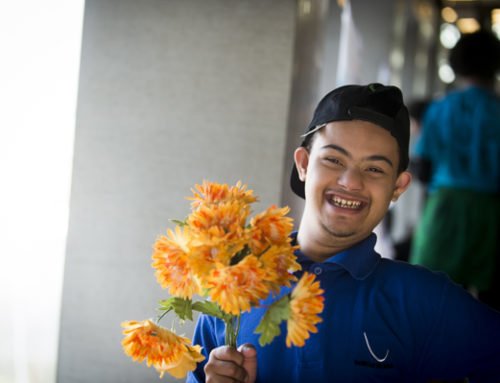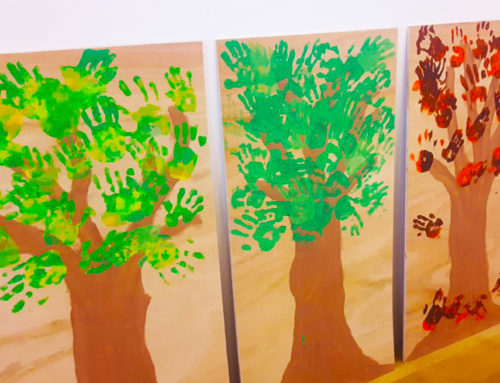UnLtd is the leading provider of support to social entrepreneurs in the UK and offers the largest such network in the world. UnLtd supports individuals who have their social ventures firmly rooted in delivering positive social change and helps entrepreneurs to start-up and scale up their business ventures.
Last year I was lucky enough to be awarded some funding from UnLtd through their Spaces for Change programme. Spaces for Change work with young people to revive unused or derelict spaces in London transforming them into something that is better-utilised and engages the local community. I came across a space in Hackney called Nu dawn, located on Well Street where I curated my first Different Abilities Symposium.
On Thursday the 11th of January 2018, a different abilities symposium hosted by Design for Disability opened up, collaborating with other companies like Urban MBA, Pretty Good Project, Beautiful Disability, B3TV and Nu Dawn London. The symposium ran from 10am-4pm and invited professionals and like-minded people to discuss and debate on designing for disability. In particular it looked at addressing the needs of users with different abilities and unpicking the market of what it means to ‘design for inclusivity’.
One of our main aims for the symposium was to find out how we could use technology in the future of design, and whether bringing different disciplines to the table can better address social stigma and help foster and develop new relationships between designer and user.
Throughout the day we looked at case studies questioning the current spending power disabled people have and questioning why businesses fail to see the benefit of hiring people with different abilities in their work.
The information that came back from the work was surprising to me as we seemed to uncover that disabled people have a vast amount of spending power and disposable income collectively.
Using funding from UnLtd, I bought a 3D printer which we used towards the end of the day to show examples of how technology could; and is being used as a driving tool for the development of rapid-prototyping within design. In one of our breakout sessions we questioned whether current technology has helped our development and whether collaboration between designers and bigger companies can alter or improve the way we work together. We invited speakers; Athena Stephens; writer, human rights activist and spokeswoman for the Women’s Equality Party and Pip Jamieson, founder of ‘the-dots’, to talk and comment on where they stand in relation to inclusive design, and what areas could be improved.
Pip Jamieson guided us through the highs and lows of what it feels to be an entrepreneur. She showed us her ‘sad happy’ diagram from when she began building her business to now. She took us through her struggles of getting ‘The Loop’, a pilot launch of The-Dots, up and running. Her highs were just as big as her lows. “When you’re running a business it’s important that you don’t just box your lows into a corner, because this is where you end up learning most from”.
Inviting Pip Jamieson to an event like this gave us an insight into what it’s like to start up a business from scratch. She captured the audience and engaged with the theme of the day.
Athena Stephens, TEDx Hackney speaker gave us a run down on her insights and views about, “How the way we design our world is disabling or enabling; depressing or delighting”.
She said she finds that there is hardly any involvement in the creative industries when it come to the acceptance of working with people with disabilities, and as a follow on from this, products being designed are not fulfilling the end users’ needs, it’s like we are getting pushed to a corner ‘we don’t need you, we’re happy on our own’. When I was chatting to Athena, I could feel her passion for this subject, which I found to be a breath of fresh air. For some people feeling included is just a small thing, for others it can be life-changing.
Some of the problems that arise around the topic of including people with disabilities are that individuals feel ‘boxed-in’ due to companies and firms not hiring disabled people because they’re scared or apprehensive about hiring somebody with a disability because of challenges they may face. I find this way of looking at diversity very negative, firms that are not wanting to hire somebody because of the challenges they may face may have to realize and question their social model. To make firms socially inclusive firms should be able to adapt to the surroundings for others; not forcing individuals to change their own environments. Jamieson, gave us a great insight into the inclusive nature of her, now global, company. ‘The-dots’ is the UKs professional network for creatives. Running since 2014 she told us that the platform originally evolved from a smaller company she co-founded called ‘The Loop’, designed to be a more creative-minded version of Linked In. She describes The-dots as the new Linked in for creatives.
One quote from Jamieson made me think long and hard, “If we are all the same, how can we think differently!” I feel like society boxes people into unnecessary categories, eg, ‘disabled’, ‘gay’, ‘bisexual’, and so on. At the end of the day humans are humans regarding race, gender, sexual orientation etc.
The reason I’m questioning this quote, is that every individual is unique in their own way. We, as a society should play to these strengths and be on the look-out for new and interesting opportunities. It’s the same with people who identify themselves as being ‘disabled’, as communities we need to create adaptive environments that are socially inclusive and where everyone can all feel equal with one another. We’ve got to stop putting people into boxes. If society or the environment challenges you to think we’re all the same then we need to disrupt these rules, social stigmas and create a new-changed society.
Later this year I will be holding my hack-a-thon in a new space called Soapbox. Finding the right space for my next event came with its challenges, as I did not find many accessible spaces in London which fit in with the criteria of UnLtd’s funding requirements. However, I am happy to say that we have now secured a space in Old Street called Soapbox.
An Inclusive design process is so valuable to achieving the right products; designers, users, testers, engineers and many more should foster this way of working. Something that I picked up on in Jamieson’s talk was the way the employees network of ‘The-Dots’ have such a variety of backgrounds, race, gender and so on, which makes it so marketable. If your business brings variety and diversity to the table, then everyone benefits. Kevin from Nu dawn explained, “For you to make success you have to work collectively, cooperatively as well as individually, unless you start doing that, all of this makes no sense.”
‘Inclusive design’ is a term that everybody seems to be familiar with. One way of looking at it that was so nicely described in the symposium, An inclusive design process comprises of the following stages:
- Discover: The systematic exploration of the perceived need to ensure the right design challenge is addressed, with due consideration of all stakeholders; leading to the first output, an understanding of the real need.
- Translate: The conversion of this understanding into a categorised, complete and well defined description of the design intent; leading to the second output, a requirements specification.
- Create: The creation of preliminary concepts that are evaluated against the requirements; leading to the third output, concepts.
- Develop: The detailed design of the final product or service, ready to be manufactured or implemented; leading to the final output, solutions.
- In addition, evaluation occurs throughout the design cycle.
Organising an event in the second week of January took some forward planning. Confirming speakers, attendees and couriers in the run up to Christmas did have its challenges. It was a slight struggle to confirm who was going to attend. As my second business event, I felt that this symposium was a lot more structured and better organised than my pop-up in Peckham a year ago. I had a better idea of the sort of outcome I was looking for and the types of questions I wanted answered, I managed to curate, with my team, a day of speakers and workshops that moulded around a more specific set of topics. I felt I’ve learnt a lot from the pop-up, learning that for me to make and keep a more engaged event, I should keep it small and invite individuals who I know will be good assets. Numbers are not important it’s the quality of conversations that made the event such a success.





